Last Updated on January 13, 2024 by Greg Gillson
Many residents of the Pacific Northwest are very outdoors and nature oriented. Thus, many people in Washington State put out bird feeders in the winter.
Are you thinking of joining them?
If you are thinking about feeding winter birds in Washington for the first time, or are just looking for some new ideas, this article is for you!
This article tells why and how to set up a bird feeder in Washington State in the winter. I’ll also show you photos of the common feeder birds in Washington that you can look for at your own backyard feeder! I will give brief identification tips. I will tell you what foods and what type of feeders attract each species.
West of the Cascade Mountain range winters are fairly mild and very wet. Along the coast, rainfall can reach 150 inches in the coastal hills. Seattle averages about 38 inches of rain per year, much of it in the winter. Snow in the lowlands varies from year to year. West of the Cascades, where most people live, most areas average about 10 inches of snow per year.
The Cascades volcanic peaks remain snow-covered all year. Towns in higher elevations facing west get more rain and snow.
East of the Cascades winter is cold. Spokane averages 44 inches of snow in winter. Still, there are more sunny days and much less rain than the west side.
Whether you live in eastern or western Washington, there are many birds that come to feeders in winter. Feeding them is a joy!
In fact, many of the birds at feeders in winter in Washington are resident birds that will come to your feeders all year.
Why feed winter birds in Washington State?
Birds in winter are not evenly distributed. One can walk through the woods in winter and detect few birds. These same woods teem with birds in summer.
Rather, many birds are concentrated near towns and residential areas in winter. Towns provide varied habitats, and residential landscaping and parks can provide places for birds to winter.
Towns often have water impounds and city parks with ponds. Towns create heat islands, a bit warmer than surrounding areas.
There are frequently more birds in residential areas than some nearby areas in winter, such as fields and forests.
These birds need food and water, obviously. And we can provide that to the birds that concentrate in our backyards. Birds especially appreciate our feeders during longer periods of inclement winter weather.
Then, of course, birds provide us with joy. They are a link to nature. This link with nature is ever more important for our mental and physical well-being.
Feeding birds can also give you a hobby to share with like-minded neighbors. Your bird feeders, and thus interest in feeding birds, is readily obvious to passers-by.
A winter bird feeder can be a family project during the mid-winter vacation from school. It can be part of a home schooling curriculum. And what a wonderful way to bond with your grandchildren!
What birds come to feeders in winter in Washington State?
This next section is a guide to the most common winter birds at your feeder in Washington.
If you learn the following 12 bird species, you will have a basic knowledge of the birds in your backyard. This is because many of these birds are actually resident year-round, and will visit your feeders all year, if you are so inclined as to keep feeding birds beyond the winter.
I have written another article on common backyard birds of Washington. It tells about some different birds you may see in spring and summer. It also includes common birds found all year long that don’t usually come to feeders. I’ll link to it again at the end of this article. Then you can visit that page if you want.
This section following includes my personal bird photos. I add a paragraph about identification. I tell where these birds occur in winter.
Finally, for each bird species I tell what feeder foods they like best. Then I list what feeder type they prefer.
Ready? Enjoy!
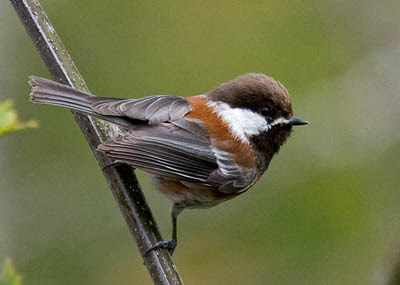 |
| Chestnut-backed Chickadee. Greg Gillson. |
Chestnut-backed Chickadee
These active little balls of puff visit in family groups with wheezy chick-a-dee-dee calls.
These are birds of damp conifer forests. They occur from coastal Alaska south to San Francisco. There is also a group in northern Idaho and adjacent mountains.
Chestnut-backed Chickadees are common in conifer forests in the western portion of Washington from the Cascades to the Coast. Also in mountains in extreme eastern Washington.
These are very small birds. Round with a big head on short neck.
Wings and tail are dark. Dark blackish-brown crown and black bib are offset by bright white hind face. Back and sides rich chestnut.
These birds love black oil sunflower seeds from tube and hopper feeders. Also eat suet.
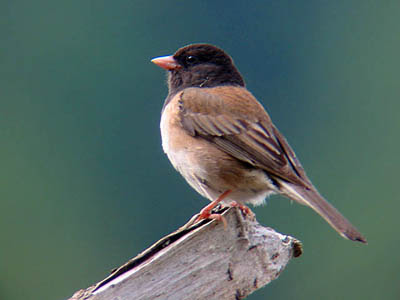 |
| Dark-eyed Junco. Greg Gillson. |
Dark-eyed Junco
These tiny sparrows twitter and scold on the ground, flashing their white tail feathers.
They are found in openings and the edge of conifer forests. In winter they are found in backyards from Alaska and southern Canada south through most of the United States.
Dark-eyed Juncos are found throughout Washington in the winter.
These birds are small and horizonal on the ground with fairly long tails. The bill is small.
Most birds are brown above and white below, with pink sides. They have heads that are either black (males) or gray (females and first-year birds). Rare forms are all solid dark gray above with white belly.
They prefer to eat on the ground or on low platform feeders. They love millet, hulled sunflower seeds, and cracked corn.
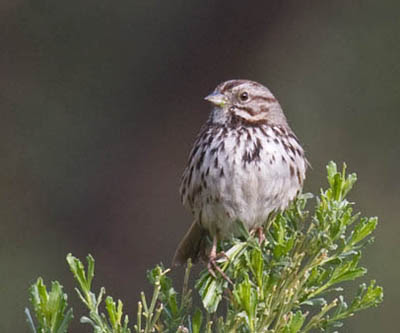 |
| Song Sparrow. Greg Gillson. |
Song Sparrow
These birds, when found in backyards, often only occur as secretive singletons or pairs in dense bushes.
Their typical habitat is marshes and wet tangles in stream bottoms, forest edges, road ditches, or anywhere, really. They are found from coastal Alaska south through all but the most frozen parts of the northern United States.
In Washington, Song Sparrows are common in winter throughout western lowlands and eastern stream bottoms.
These are smaller, plump birds with round head.
They are streaked above in various shades of gray and brown. The head is gray with brown lateral crown stripe, line back from the eye. The throat and malar is white, bordered by a wide dark lateral throat stripe and a dark mustache. The under parts are heavily spotted, converging in a central breast spot.
Song Sparrows eat small mixed seeds on the ground or low platform feeders.
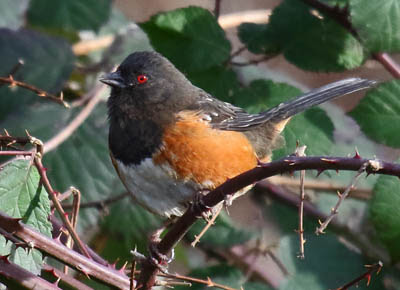 |
| Spotted Towhee. Greg Gillson. |
Spotted Towhee
These larger sparrows skulk under larger residential landscaping.
These birds like dense brushy habitats. In winter they are found in the West from southern British Columbia south to Texas, New Mexico, California, and mountains of Mexico.
In winter, Spotted Towhees are found in western Washington, and northeastern parts of the state. They avoid the Columbia Plateau away from water, and the higher forests.
These are big plump sparrows with large tails.
These birds are blackish above with white belly and rusty-orange sides. They are spotted on the wings and tail corners. They eye is strikingly red.
Spotted Towhees like sunflower and other smaller mixed seeds from the ground or low platform feeders.
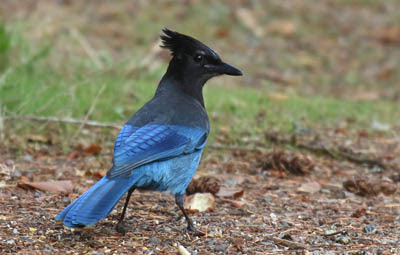 |
| Steller’s Jay. Greg Gillson. |
Steller’s Jay
These are bold and brash birds in woodlands and backyards. But they keep a wary eye on people, despite being found in residential areas.
These birds are found primarily in conifer habitats, from seashore to mountain tops. They occur in conifer mountains of the West from southern Alaska into Mexico.
In Washington Steller’s Jays are found throughout in winter, except in the Columbia Plateau of the southeastern corner of the state.
These are big stocky birds with an obvious crest. They have full tails.
Their blue body, wings, and tail becomes sooty black on the back, upper breast, and entire head.
Steller’s Jays eat just about anything. They especially love peanuts and suet, and will also eat sunflower seeds. They prefer larger platform feeders.
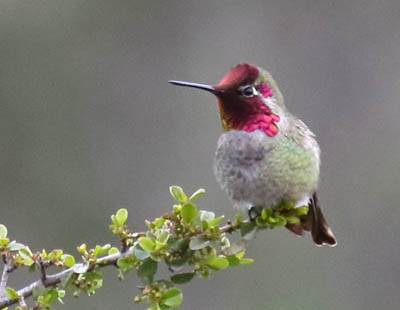 |
| Anna’s Hummingbird. Greg Gillson. |
Anna’s Hummingbird
Familiar backyard birds year-round west of the Cascades.
These birds are found in lowlands where water remains mostly unfrozen in winter. They are found from southwestern British Columbia, south west of the Cascades and Sierra-Nevada mountains through California and into Arizona.
Anna’s Hummingbirds are year-round residents in western Washington, occasionally in eastern Washington along the Columbia River.
Big for hummingbirds, they have the typical big head, needle-like bill, and short tail.
These are green above and on the belly. Males have iridescent rose-pink feathers covering the entire head and throat in males during the breeding season (which starts in January).
Anna’s Hummingbirds drink nectar from special hummingbird feeders.
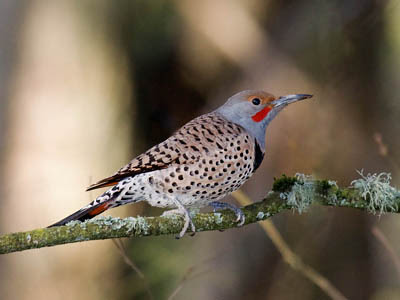 |
| Northern Flicker. Greg Gillson. |
Northern Flicker
This big bird fools people. When they see it hopping in the lawn eating ants, they can’t imagine it is a woodpecker!
Found in woodlands and residential trees, these birds are found in winter across the United States, except the dry southwestern deserts.
Northern Flickers are found throughout Washington in winter except for highest mountains.
Large, with a big head and short pointed tail. Short legs. The bill is long but curved slightly.
Brown above, barred with black. Pinkish on under parts and heavily spotted. There is a black crescent across the chest. The face is gray and brown. White rump visible in flight. In Washington and the West, the wing linings are salmon-orange colored, very obvious in flight. In the East, the wing and tail linings are bright yellow. These, or hybrids, sometimes show up in Washington in winter.
Northern Flickers come to suet feeders and peanuts.
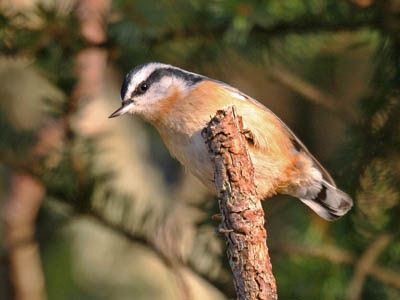 |
| Red-breasted Nuthatch. Greg Gillson. |
Red-breasted Nuthatch
These little birds crawl over the bark of tree limbs and trunks–even upside down!
This species of nuthatch loves conifer trees. They are found from Alaska and across Canada. They are found in the mountains of the northern and western United States, irregularly in winter being found throughout all of the US.
Red-breasted Nuthatches are found throughout Washington in winter.
These are tiny birds with a stubby tail.
Birds are bluish-gray above and delicately pinkish-orange below. The black crown and eye line set off a white eyebrow.
Red-breasted Nuthatches love black oil sunflower seeds from tube feeders. They love nuts and peanuts. They are fond of suet.
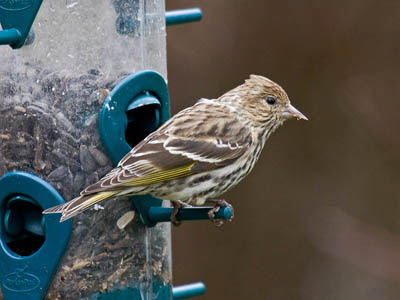 |
| Pine Siskin. Greg Gillson. |
Pine Siskin
These birds descend to lowland feeders in winter, often in large flocks.
These are birds of northern conifer forests and mixed woods. In winter they are found from coastal Alaska, across southern Canada, and all of the United States, and into Mexico.
Pine Siskins are found throughout Washington in winter.
These birds are the shape of their near relatives, the goldfinches. Thus, they have a rather small head relative to the body. They have short forked tails. The bills are short and pointed.
Streaked brown and rather non-descript like a small house finch, But stronger white wing bars. They flash yellow wing linings and tail feathers in flight.
Pine Siskins love Niger seeds in thistle socks or feeders. They also eat black oil sunflower seeds from tube or hopper feeders, seeming to prefer these hulled.
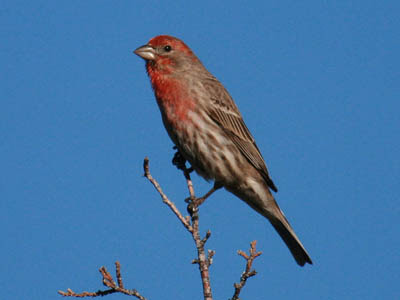 |
| House Finch. Greg Gillson. |
House Finch
This is a common residential bird, often visiting feeders in family groups or small flocks.
They are found in residential areas and farms year-round from southern Canada, throughout all of the United States and into Mexico.
House Finches are year-round residents throughout Washington except for deep forests and high mountains.
These are medium-sized backyard birds with fairly small heads and medium-long tails. The bill is thick and short.
Birds are dusty gray-brown, streaked with darker brown. Males have red-orange feathers on forehead, breast, and rump.
House Finches love black oil sunflower seeds from tube or hopper feeders.
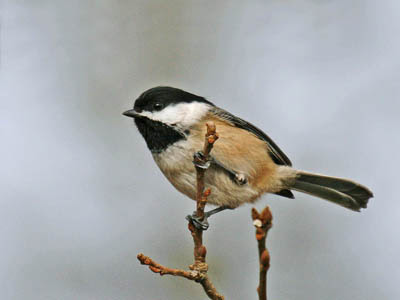 |
| Black-capped Chickadee. Greg Gillson. |
Black-capped Chickadee
These cute little birds are favorites of many backyard bird watching enthusiasts.
Found in deciduous woods and backyards, they occur from Alaska, across Canada, and the northern half of the United States.
In Washington in winter, Black-capped Chickadees are found throughout the state, except for the Columbia Plateau in the southeastern corner of the state.
As with all chickadees, they have plump bodies, a large round head on short neck, and a longer active tail.
Black-capped Chickadees have a gray back and white underparts. The crown and bib are black, offset by a white face.
These birds love black oil sunflower seeds from tube and hopper feeders. They also eat suet from suet feeders.
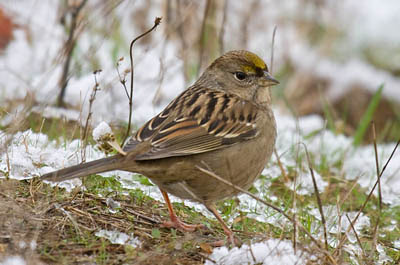 |
| Golden-crowned Sparrow. Greg Gillson. |
Golden-crowned Sparrow
These ground-loving birds are winter visitors to lowland hedges.
Found in winter on roadside edges and brushy areas, these birds winter from southwestern British Columbia to southern California.
In winter, Golden-crowned Sparrows occur in western Washington and eastward along the Columbia River.
These are rather large and long-tailed sparrows.
These are tan birds throughout with dark brown streaked backs, very similar to white-crowned sparrows. These birds have a dark forehead with a touch of yellow on the forecrown, much brighter in breeding season.
Golden-crowned Sparrows eat sunflower and mixed seeds on the ground or low platform feeders.
Setting up a winter bird feeding station in Washington State
I’m going to recommend these feeders for winter birds in Washington.
The first is a tube feeder. Fill it with black oil sunflower seeds. Wagner’s usually has a good price. I find the best prices, though, at my local farm and hardware store. Sunflower seeds will attract the chickadees, nuthatches, house finches, and siskins. I recommend the Droll Yankees Classic tube feeder.
Secondly, I recommend for you a covered low platform feeder. This feeder has a roof to keep the rain and snow off, and the bird seed dry. I recommend feeding millet only on these ground-level feeders. And don’t put out too much at once. Because it can go bad when wet. Here is the white proso millet I bought recently. This low feeder with millet will attract the ground feeding species of sparrows, juncos, and towhees.
Feed high energy suet to birds in winter. I have been buying St. Albans Bay Suet for my birds. I bought the Nature’s Way Upside Down Suet Feeder. Chickadees, nuthatches, bushtits, woodpeckers and wrens feed from it. And it does a pretty good job at keeping out those greedy jays and starlings.
West of the Cascades, keep up a hummingbird feeder filled all year. I like the smaller More Birds Ruby 10 ounce hummingbird feeder. They have larger sizes. But I recommend several smaller feeders rather than one larger one. Remember: one part sugar to 4 parts water.
Wrapping Up
Winter in Washington State offers a vibrant scene for bird watching, with migratory species arriving and resident birds showcasing their winter plumage. Here are some top spots to explore, focusing on different regions:
Puget Sound and Skagit Valley:
- Skagit Wildlife Area: A haven for thousands of waterfowl like snow geese, swans, and raptors like eagles and falcons. Look for wintering owls like short-eared owls on Fir Island.
- Discovery Park and West Point Lighthouse: Observe a variety of marine birds like guillemots, cormorants, and loons, along with shorebirds like dunlins and sandpipers.
- Dungeness Spit: Catch sight of harbor seals and a diverse mix of waterfowl like brant geese, harlequin ducks, and black oystercatchers.
Eastern Washington:
- Lake Sammamish State Park: Home to Bald Eagles, wintering waterfowl like buffleheads and goldeneyes, and various songbirds like chickadees and kinglets.
- Spokane River Centennial Trail: Look for eagles, hawks, ducks, and migratory species like American robins and yellow-bellied sapsuckers.
- Hanford Reach National Wildlife Refuge: This vast desert oasis attracts wintering waterfowl like snow geese and tundra swans, along with raptors like hawks and owls.
Coastal Washington:
- Ocean Shores and Westport: Observe migrating shorebirds like dunlins, sanderlings, and black turnstones, along with seabirds like common murres and razorbills.
- Long Beach Peninsula: Explore coastal mudflats for shorebirds and visit Willapa Bay National Wildlife Refuge for bald eagles and waterfowl.
- Olympic National Park: Look for wintering seabirds like guillemots, auklets, and marbled murrelets along the dramatic coastline.
Frequently Asked Questions
What bird in Washington State turns white in winter?
Rock Ptarmigan in Washington: Feathered Snow Queens of the Alpine Realm
The Rock Ptarmigan (Lagopus muta) is a fascinating bird found in the high mountains of Washington, showcasing remarkable adaptations to survive the harsh winter conditions. Here are some interesting facts about these “Snow Queens”:
Camouflage Champions:
- Winter
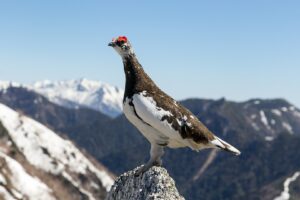
Rock Ptarmigan by Daisuke Tashiro Wonderland: As winter approaches, ptarmigans undergo a dramatic plumage transformation, molting from their mottled brown summer coat into an almost entirely white winter plumage. This incredible camouflage blends seamlessly with the snowy landscape, protecting them from predators.
- Summer Disguise: In warmer months, their brown feathers speckled with black and white provide camouflage among rocks and vegetation. This dual-colored coat helps them stay hidden from predators throughout the year.
Life on High:
- Alpine Habitat: Rock ptarmigans prefer rocky slopes and alpine meadows above the treeline, where harsh winds and freezing temperatures are the norm. Their thick feathers and downy undercoat provide superior insulation, allowing them to thrive in these challenging environments.
- Tough Feet: To walk on snow without sinking, their feet are covered in dense feathers, acting like natural snowshoes. This adaptation, known as “feathered feet,” helps them navigate their snowy winter terrain efficiently.
Dietary Opportunists:
- Year-Round Menu: Their diet varies depending on the season. In summer, they feast on leaves, buds, and berries found amidst alpine vegetation. During winter, they switch to a vegetarian diet, digging through snow to find buried plants and twigs.
- Gritty Grub: To aid digestion of tough plant material, they swallow small stones called grit, which act like grinding teeth in their gizzards.
What is the black and white bird in the Pacific Northwest?
These are Black-billed Magpies.
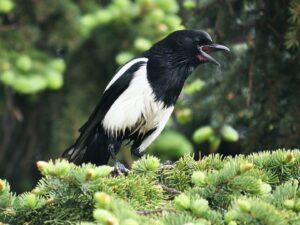
However, their distribution within the state is somewhat specific:
- East of the Cascades: They are a common and widespread resident in open habitats like prairies, farms, and sagebrush steppe throughout eastern Washington.
- West of the Cascades: Black-billed Magpies are much rarer and primarily found as winter visitors in lowland areas, especially near agricultural fields or open spaces. Sightings in western Washington are considered to be irregular and often involve small groups.
Historically, Black-billed Magpies were more common in western Washington. However, their populations have declined significantly due to several factors, including:
- Habitat loss: Conversion of natural habitats to farmland and urban areas has reduced their available nesting and foraging sites.
- West Nile Virus: The introduction of West Nile Virus in the early 2000s had a devastating impact on magpie populations, particularly in western Washington.
- Competition with Common Ravens: These larger crows can outcompete magpies for food and territories, further contributing to their decline in some areas.
Despite these challenges, Black-billed Magpies remain a significant bird species in eastern Washington and a fascinating occasional visitor in the western part of the state. Their striking black and white plumage, long tail, and intelligent behavior make them an interesting sight for birdwatchers.
Can I find subspecies of Song Sparrow in Washington State?
- Melospiza melodia merrilli: This subspecies breeds in most of eastern Washington, east of the Columbia River. It’s slightly paler and grayer than the nominate subspecies, with less rufous coloration on the chest and back.
- Melospiza melodia fisherella: This subspecies breeds in south-central Washington, primarily in the Yakima Valley and surrounding areas. It’s the palest subspecies in the state, with a grayish-white breast and lighter overall plumage.
- Melospiza melodia morphna: This subspecies breeds in western Washington, mainly along the coast and Puget Sound. It’s similar to the nominate subspecies but has a slightly darker and richer brown back and chest.
Identifying specific subspecies based on visual characteristics in the field can be challenging, requiring experience and close observation of subtle differences in plumage coloration and size. However, knowing their general distribution range in Washington State can provide a good starting point for narrowing down your identification.
These related articles should answer your questions on setting up a bird feeder and get you started viewing and identifying your backyard birds:
The most common backyard birds in Washington State
My recommended bird feeder setup
Bird seeds that attract the most birds
Different kinds of bird feeders for different birds
Bird baths that birds actually use



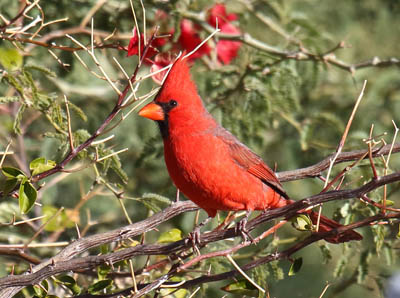
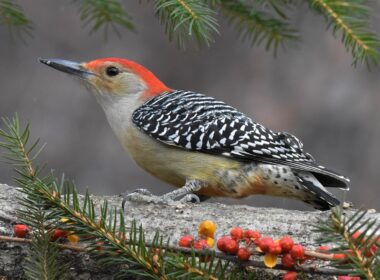
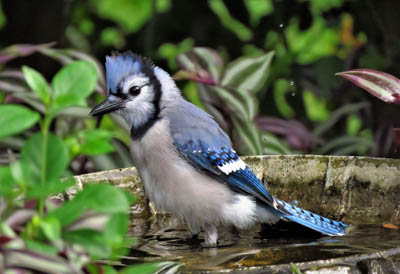
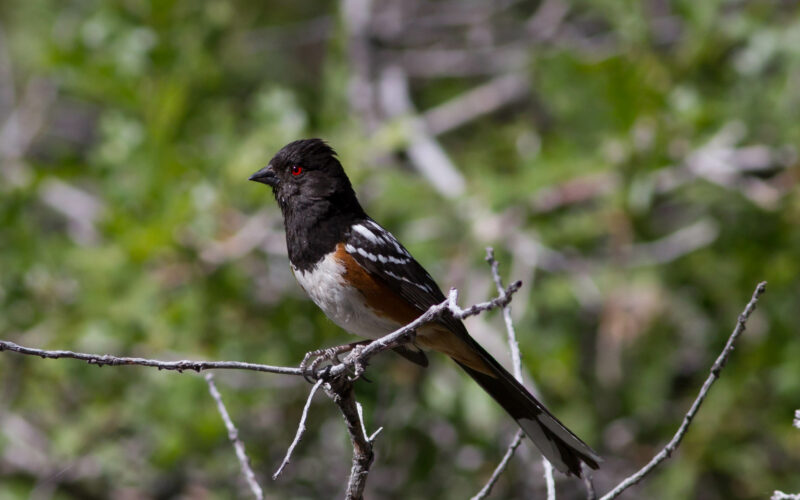
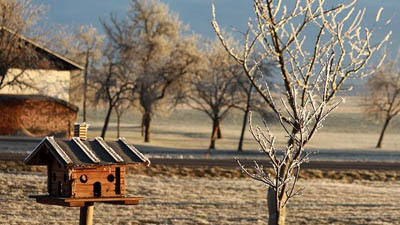
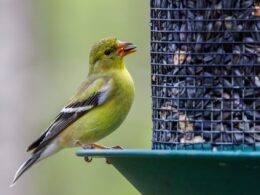
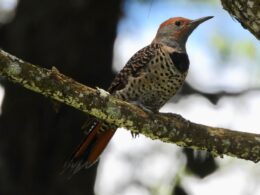
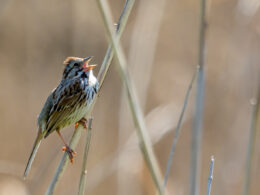
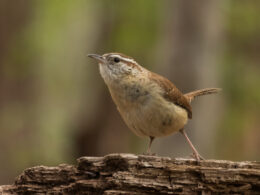
Thank you so much for this useful and informative article! Much appreciated!
You are most welcome. Thanks for stopping by and saying hi.
Loved this easy to read and information filled article. I'm new to WA and it helped me and my bird watching, but not bird eating cat, tremendously.
Thank you! I'm glad it helped.
We're relatively new to birding here in Eastern Washington. Your article was a huge inspiration and very helpful
Thank you!!!
That's so wonderful to hear. Thank you for taking the time to comment.